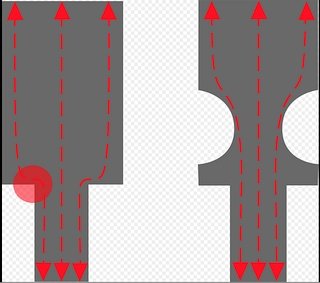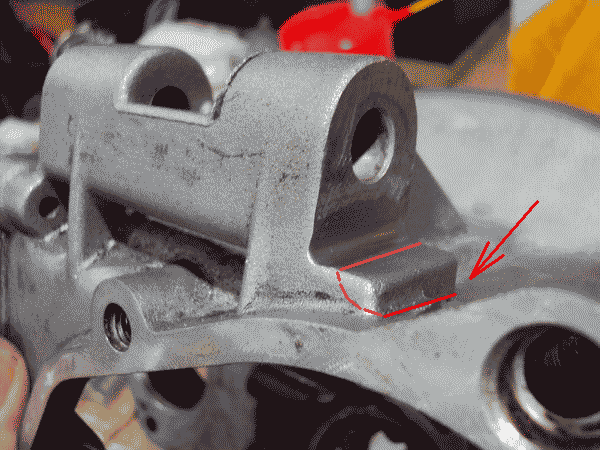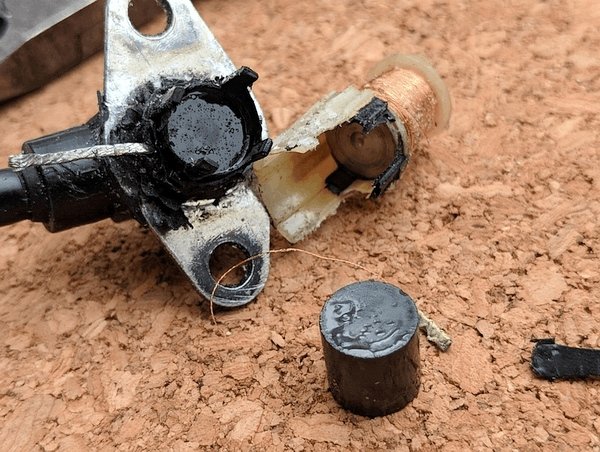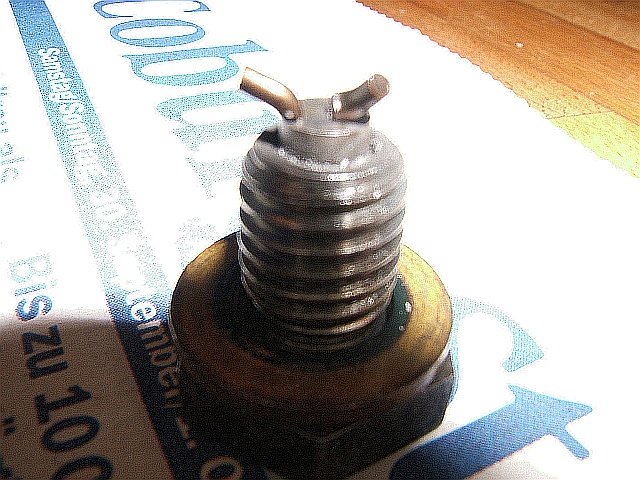-
Posts
2,711 -
Joined
-
Last visited
-
Days Won
30
Content Type
Profiles
Forums
Events
Gallery
Community Map
Everything posted by luhbo
-
Loctite 648. Good stuff.
-
mine has about 60km left when the light comes on the first time. After 60km the situation becomes tricky, but so far I never had to push the bike
-
The light one looks right, I would want it even lighter, going for white. The other one is sooty, surely not ok. Directly behind the outlet valve I wouldn't want any carbon residues at all. Being an outlet valve should be no fun. It also looks as if the gasket on the right cylinder was blowing
-
After 150.000 km I noticed the same picture on my bike: one header black, the other one white. I pulled the injectors, activated the pump, then applied 12V to the injectors for 10 seconds and measured what they delivered. The difference was significant. I don't think it was a matter of clogging, in fact it's more likely that one was badly worn (nozzle hole to big) or that they weren't matched right from the beginning. Anyway, I swapped them against a different and much better matched pair, had both ports the same colour - and felt exactly no difference on the road. Even the fuel consumption was the same.
-
This axle is loose, so you'd better fix it, do not just close this hole. It's basically the same procedure as for the spring. Cover off, lower wheel off, axle out, clean shaft and hole. Then apply strong Loctite and put the axle back into its seat, wait half an hour, reassemble the rest and put the cover back on the housing. Don't forget to change the neutral switch.
-
Hey, we have 2020, soon, and are moving forward, still. Anyhow, a clogged filter would be a nice and easy solution for his problem. Still it would take a lot of particles to get this filter closed. And not overnight. I'm curious what the cause will be.
-
Anyone ever had a stuffed gas filter? Still filling from rusty army canisters?
-
Should you still have the old one, check whether it has the sealing ring still on it. If not, you've probably two under the new one. One pops out and the light comes on. That happens more often then UFI delivers unusable filters.
-
My problems were heavy emc interference from crappy plug caps. Between 3 and 4K it was really bad, had to stay below or above. The gap was 1.2 mm. I reduced it to rather zero what made a big improvement. The history behind it: I had changed the plug caps (to the crappy ones), as a result the MyEcu quit working. Swapping this against a Marelli ecu seemed to work, but only until the engine had warmed up. From here on I was on the wrong track. Anyway, a weak, or as in my case, a too noisy phase signal may totally spoil your bike experience Good thing is: the sensor itself is rather robust. Properly mounted it's not a part to be afraid of.
-
The hardware/software developer here where I work (those who told me the phase sensor would be Hall based ... ) say the gap and the thus resulting signal form and strength could interfere with cpu frequency, polling frequencies and so on. While they were wrong with what type the sensor is, they might be correct in this case. Most here think this engine/ecu combo has a sensitive point between 3 and 4K for instance, regardless what mapping is used. This would be an interesting subject for someone who has the tools to dig in further at this point. Maybe this has to do with how big this gap is. So, if an ideal gap, probably, exists, why not Chuck's .030"
-
Nice work. The casting cooling as root cause sounds reasonable. Besides that, I know a guy over here who's claiming he heard his box crack while spanning the mount bolt
-
Titaniumed bikes tend to float ...
-
That's why and what I asked you. What for do you want it in your V11 engine? What would be the exact benefit of a higher oil pressure, in this engine? Personally I can see none. On the other hand, why not buy one and support the small suppliers.
-
Why would you want a higher oil pressure? What's wrong with the standard pressure?
-
On my actual bike I have done nothing of the above discussed modifications and the gearbox is still good after at least 80.000 km. My first one was already sipping when I bought it with 30.000km in 2004. With 200.000 11 years later it did still the same, a few drops per day. Never had to refill any oil. Based on that the most important thing is to not overtighten this mounting bolt I'd say. Besides that the mentioned tube mod is done quite frequently over here.
-
Not so much removing the weakest aerea, more weakening the stiffer areas next to it. found in Wikipedia
-
the housing doesn't get stronger, it's just more unlikely to break at this line. As it typically does. It's because the tension distribution in the material is more evenly, smoother. That helps especially under dynamic loads.
-
Yes. Along this line you should see the steepest change in stiffness. To be on the safe side enlarge the through hole and press in a matching piece of tube. The tube shall bear the clamping forces, so that left for the flange is keeping the gearbox in position(enough a task)
-
-
I'd say backlash gears firstly reduce backlash. BTW: The V7 up to the Sport engines had skewed timing gears. Whether that had technical reasons or maybe was a matter of availability (FIAT e.g.) - can't say. At least you could fine-tune the timing.
-
You're missing the british gear towers :) Nonetheless, I think the times of gears were over once the chains were reliable enough.
-
These were two of those 90 degree ends. Only chance for them to get to the sump I can think of was at the assembly line. Pistons and cylinders still were in pristine condition.
-
Measure them. M3 should be nearly 3mm. The reading was ok? Calis look the same but give halve the output IIRC
-
So, coming home from a week entry level hiking in Switzerland I found the recently ordered phase sensor at my door. While I was so sure it would finally cure the heavy stumbling and missfiring which the bike had developed over the last 4 weeks - it did not. Also I have to correct what I wrote about the Hall sensor. While it's true that Hall sensors are prone to ageing and that they're sensitive to heat, it is not true that the sensor here is of this type. Instead it's just a plain cheap inductive device. Hall sensors always have three contacts, inductive ones sometimes too. On the picture you can see the coil holder with coil and core, the cable ends and the magnet. The sensor shown above most probably was still good, allthough the magnetism of the replacement is remarkably stronger (will it collect any debris even quicker now?). For the positive side: the inductive type should be rather robust, no ageing electronics inside. The negative one: at this point I still had no solution for the problems. In fact, as soon as the engine had warmed up, from 3000 upwards the tach needle again started waving, with the engine again producing the same enervating bucking as before. The ECU at 3000 clearly got kicked out of sync. Long story short: the problem were the cheap silicone connectors on the inner spark plugs which I had installed also 4 weeks ago. As the outer ones (this engine has dual plugs) have the standard 5kOhm connectors, electrically/theoretically (or v/v) this should have worked. That it obviously did not might be due to the fact that these shitty aftermarket caps are so cheaply designed that they don't securely contact the plug. The resulting firing then induces enough noise into the signal cabel to screw the ECU. Theoretically. Anyway, solid connectors now and all is fine.
-
Here's a pic of what I found in the sump of my engine in 2009. Not in the mesh, though. Looked it up: the ends of what is called "gudgeon pin retainer".











